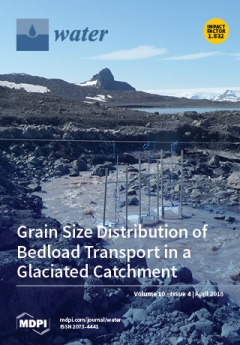This study aimed at determining the field-saturated soil hydraulic conductivity,
Kfs, of an unmanaged field affected by fire by means of single-ring infiltrometer runs and the use of transient and steady-state data analysis procedures. Sampling and measurements were carried out in
[...] Read more.
This study aimed at determining the field-saturated soil hydraulic conductivity,
Kfs, of an unmanaged field affected by fire by means of single-ring infiltrometer runs and the use of transient and steady-state data analysis procedures. Sampling and measurements were carried out in 2012 and 2017 in a fire-affected field (burnt site) and in a neighboring non-affected site (control site). The predictive potential of different data analysis procedures (i.e., transient and steady-state) to yield proper
Kfs estimates was investigated. In particular, the transient WU1 method and the BB, WU2 and OPD methods were compared. The cumulative linearization (CL) method was used to apply the WU1 method. Values of
Kfs ranging from 0.87 to 4.21 mm·h
−1 were obtained, depending on the considered data analysis method. The WU1 method did not yield significantly different
Kfs estimates between the sampled sites throughout the five-year period, due to the generally poor performance of the CL method, which spoiled the soil hydraulic characterization. In particular, good fits were only obtained in 23% of the cases. The BB, WU2 and the OPD methods, with a characterization based exclusively on a stabilized infiltration process, yielded an appreciably lower variability of the
Kfs data as compared with the WU1 method. It was concluded that steady-state methods were more appropriate for detecting slight changes of
Kfs in post-fire soil hydraulic characterizations. Our results showed a certain degree of soil degradation at the burnt site with an immediate reduction of the soil organic matter and a progressive increase of the soil bulk density during the five years following the fire. This general impoverishment resulted in a slight but significant decrease in the field-saturated soil hydraulic conductivity.
Full article





